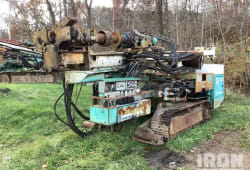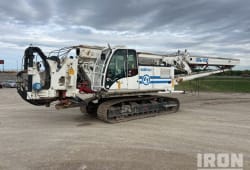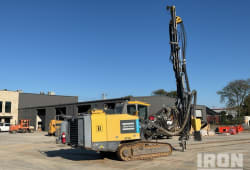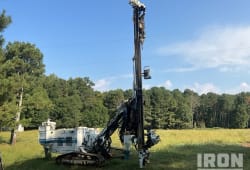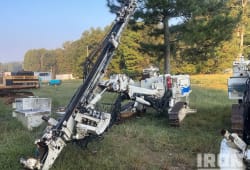Everything You Need to Know: A Beginner's Guide to the Basics of Drills
7 Min read
)
May 30, 2023
Drills are versatile power tools used for creating holes in various materials such as wood, metal, and concrete. They consist of a motor, chuck, and a rotating drill bit that cuts through the material upon application of force. Drills play a vital role in numerous industries and DIY projects, offering several key features and benefits:
Versatility: Drills can perform a wide range of tasks beyond drilling holes. With the right attachments, they can also drive screws, mix materials, sand surfaces, and even act as a power source for other tools.
Adaptability: Cordless drills offer the advantage of portability and flexibility, allowing users to work in remote locations or areas without easy access to power outlets. This makes them ideal for construction sites, outdoor projects, and on-the-go tasks.
Enhanced Productivity: Drills allow users to efficiently complete tasks like installing fixtures and assembling furniture by drilling holes of various sizes and depths. They are also useful for creating openings for wiring and plumbing.
Time and Cost Savings: By streamlining drilling processes and reducing manual labor, drills help save valuable time and labor costs. They increase productivity, allowing users to do more jobs in less time and with fewer resources.
Exploring the Various Types of Drilling Machines
There are many types of size of drilling machines but commonly used types are discussed below:
1. Bench Drills
Bench drills, also known as pillar drills, are stationary machines mounted on a workbench or floor stand. They feature a vertical column that holds the drill head, which can be raised or lowered to adjust the drilling depth. Bench drills are commonly used for precise drilling operations in woodworking, metalworking, and small-scale manufacturing. They offer stability, accuracy, and versatility for a wide range of applications.
2. Handheld Drills
Handheld drills are portable and versatile tools that are widely used in construction, carpentry, and DIY projects. They come in various sizes, from compact cordless models to more powerful corded drills. Handheld drills are suitable for drilling holes in wood, metal, plastic, and other materials. They often feature adjustable speed settings, multiple drilling modes (such as drilling, driving screws, and hammer drilling), and interchangeable drill bits for enhanced versatility.
3. Magnetic Drills
Magnetic drills are tools for drilling on various surfaces like vertical or horizontal ones. These machines use a strong electromagnetic base that adheres to the metal surface, providing stability and precision during drilling operations. Magnetic drills are commonly used in metal fabrication, construction, and heavy-duty applications. They are capable of drilling large-diameter holes in thick metal plates with ease.
4. Radial Drills
Radial drills also referred to as radial arm drills, feature a radial arm that can be rotated, raised, or lowered to position the drill head. This design allows the drill to be positioned at different angles and distances from the workpiece, making it suitable for drilling holes in large workpieces or at various locations. Radial drills are commonly used in manufacturing, construction, and metalworking industries for drilling large and deep holes accurately.
5. CNC Drilling Machines
Computer Numerical Control (CNC) drilling machines are advanced automated systems that use computer programming to control the drilling process. These machines are highly precise and efficient, offering automation and repeatability. CNC drilling machines are commonly used in industries such as aerospace, automotive, and electronics manufacturing, where precision and high-volume production are critical.
6. Cordless Drills
Cordless drills have revolutionized the world of drilling, providing unparalleled mobility and convenience compared to their corded counterparts. These portable power tools have become a staple in the toolbox of professionals and DIY enthusiasts alike. Some features of cordless drills are:
Portable and lightweight design.
Battery-powered for cord-free operation.
Variable speed control for precise drilling.
Quick and easy bit changes.
Versatile for drilling in various materials.
7. Hammer Drills
A hammer drill is a powerful tool specifically designed for drilling into hard materials such as concrete, masonry, or stone. It combines the rotating action of a regular cordless drill with a hammering or pounding motion to create rapid, repetitive impacts. Some common uses of hammer drills include:
Concrete and Masonry Work
Installation of Fixtures
Electrical and Plumbing Work
DIY Projects
For faster work on tougher jobs
The DC D791 D2 20-volt drill handles more demanding jobs than the smaller 12-volt DeWalt drill but retains great ergonomics and other functions of the DeWalt drill.
Why are drills called drills?
The term drill was first used at the beginning of the 1600s and is derived from the Middle Dutch word drill, meaning to drill or turn in circles.
Drills are called drills because they are specifically designed for the purpose of drilling large holes. The term "drill" originated from the 1600s Old English word "drilian," which means "to pierce or bore." Over time, the term drilled has evolved and become associated with the tools used for drilling.
Exploring the Versatility and Efficiency of Modern Power Tools
Modern power tools offer versatility, efficiency, and precision, revolutionizing the way we approach projects. With a wide range of functionalities and options and advancements in technology, they save time, enhance safety, and provide convenience. Embrace the power of these tools to unlock your full potential in any project or task at hand.
Popular Mechanics suggests using a powerful drilling machine for heavy-duty work. It should have robust features and a strong motor to drive screws easily into tough materials.
How to Do a Dewalt Drills Work?
Dewalt drills, like other power drills, work by converting electrical energy into rotational motion. When the drill is powered on, the electricity flows to the motor, which drives the rotation of the chuck. The chuck holds the drill bit securely in place.
As the chuck rotates, the drill bit spins rapidly, allowing it to penetrate and drill holes into the walls of various materials. These are designed with high-quality motors and durable components to deliver power, precision, and reliability for a wide range of drilling applications.
Main Components of Drilling Machine
A drilling machine consists of essential components for precise hole drilling:
1. Base: Supports the machine and can be fixed to the floor or a work table.
2. Column: Connects the base, table, and head, enabling vertical movement.
3. Arm (on larger machines): Supports the spindle and allows perpendicular movement.
4. Drill Head: Contains the spindle, feed mechanism, and drill chuck.
5. Worktable: Provides a stable surface for the workpiece.
6. Feed Mechanism: Controls the drill's lowering rate.
7. Spindle: Connects the motor to the chuck with minimal eccentricity.
8. Chuck: Grips the drill bit securely, adjusting for different diameters.
9. Electric Motor: Drives the spindle with variable speed and can be mounted on the base or column.
The Best Cordless Drill Machines
When it comes to selecting the best drilling machine for a specific application, it can be challenging due to the price and the wide variety available. To help you make an informed choice, here are some common use cases and the ideal drilling machines for each scenario:
1. Low-Volume Applications
For low-volume use, portable and sensitive drilling machines are the best option. These machines provide flexibility and precision for tasks that need occasional drilling.
2. Heavy-Duty Applications
When dealing with heavy-duty drilling tasks, radial arms, and upright drilling machines excel. These robust machines offer the power and stability needed to handle demanding drilling projects.
3. High-Volume Productions
In situations where high production volumes are required, turret, many spindles, and gang drilling machines are the best-suited choices. These machines allow for simultaneous drilling on many workpieces, significantly increasing efficiency.
4. Best Cordless Drill of 2023
The Milwaukee drill, despite being pricier among 18-volt drills, offers exceptional drilling power. It outperformed competitors in high-torque tests, achieving 20% more bored holes. With the greatest torque rating of 500-inch pounds, it surpasses all others. It also boasts an impressive warranty, with five years for the tool and two years for the battery. This cordless drill kit includes an M18 compact half-inch drill driver and two M18 lithium-ion batteries.
Milwaukee M18 2606-22CT Bosch PS31 2A Makita XFD10SY Black & Decker BDCDD12C Ryobi P215K1
Conclusion
we have explored the vast world and market of drills, covering cordless drills, power tools, and Dewalt drills. By understanding the definition, components, and functioning of drills, you are now equipped with the knowledge to tackle various drilling tasks with confidence.
Proper maintenance and care are essential for prolonging the lifespan of your drills. By following the recommended tool cleaning and storage guidelines and conducting routine maintenance routines, you can ensure optimal performance and reliability throughout the lifespan of your best drills.


